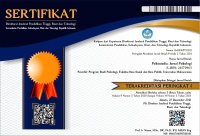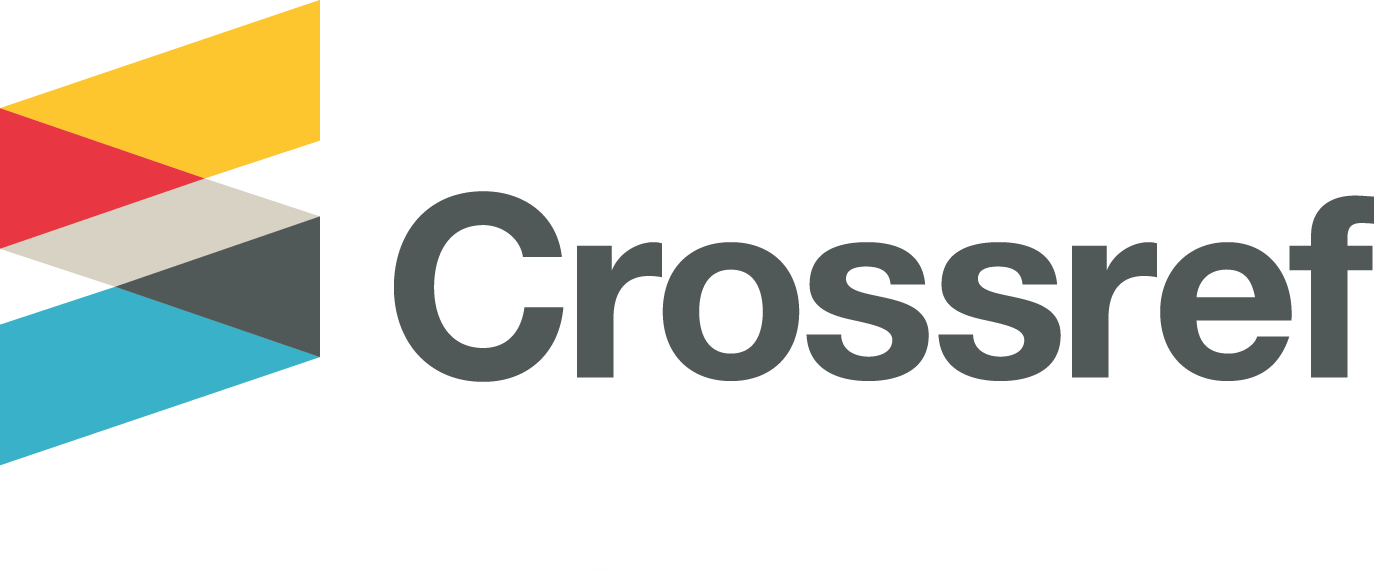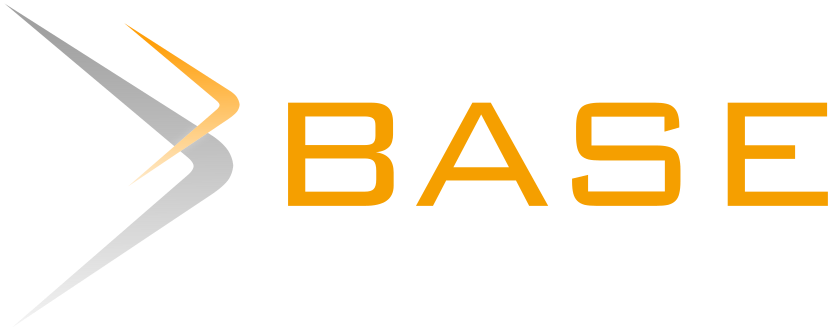Improving the Ability to Wear Socks in Autistic Children Through Behavior Modification Interventions
Abstract
Self-care, cleaning, dressing, and eating skills are the basic skills needed by autistic individuals to achieve independence and improve the quality of life. Apart from focusing on improving certain behaviors, interventions for autistic children also have an impact on stress disorders for both autistic children and their families. This study aims to improve the ability to wear socks in autistic children through behavior modification interventions. The subject of this study was a six-year-old boy who was diagnosed with autism. This type of research used Single Subject Research (SSR) with an A-B-A design consisting of baseline 1, intervention, and baseline 2. The techniques of behavior modification intervention used were forward chaining, prompting, and positive reinforcement. The intervention lasted for nine sessions with five trials in each session. The intervention began with two baseline 1 sessions, five intervention sessions, and ended with two baseline 2 sessions. The results showed an increase in the ability to wear socks independently in autistic children through behavior modification interventions.
Keterampilan perawatan diri, kebersihan, berpakaian dan makan merupakan seperangkat keterampilan dasar yang dibutuhkan individu autisme untuk mencapai kemandirian dan meningkatkan kualitas hidup. Selain berfokus pada peningkatan perilaku tertentu, intervensi pada anak autis pun berdampak pada pengurangan stress baik bagi anak autis hingga keluarganya. Penelitian ini bertujuan untuk meningkatkan kemampuan memakai kaos kaki pada anak autis melalui intervensi modifikasi perilaku. Subjek pada penelitian ini adalah seorang anak laki-laki berusia enam tahun yang didiagnosis autis. Jenis penelitian ini menggunakan Single Subject Research (SSR) dengan desain A-B-A yang terdiri dari baseline 1, intervensi, dan baseline 2. Teknik dari intervensi modifikasi perilaku yang digunakan adalah forward chaining, prompting, dan positive reinforcement. Intervensi berlangsung selama sembilan sesi dengan lima kali percobaan di setiap sesinya. Intervensi diawali dengan dua sesi baseline 1, lima sesi intervensi, dan diakhiri dengan dua sesi baseline 2. Hasil penelitian menunjukkan adanya peningkatan kemampuan memakai kaos kaki secara mandiri pada anak autis melalui intervensi modifikasi perilaku.
Keywords
Full Text:
FULL TEXTReferences
Alwell, M., & Cobb, B. (2009). Functional life skills curricular interventions for youth with disabilities: A systematic review. In Career Development for Exceptional Individuals (Vol. 32, Issue 2, pp. 82–93). https://doi.org/10.1177/0885728809336656
American Psychiatric Association, D.-5 T. Force. (2013). Diagnostic and statistical manual of mental disorders : DSM-5. American Psychiatric Association.
Ardic, A., & Cavkaytar, A. (2014). Effectiveness of the modified intensive toilet training method on teaching toilet skills to children with autism. https://www.jstor.org/stable/23880609
Bennett, K. D., & Dukes, C. (2014). A Systematic Review of Teaching Daily Living Skills to Adolescents and Adults with Autism Spectrum Disorder. Review Journal of Autism and Developmental Disorders, 1(1), 2–10. https://doi.org/10.1007/s40489-013-0004-3
Biran, M., & Nurhastuti. (2018). Pendidikan Anak Autisme. Goresan Pena.
Boyd, B. A., McDonough, S. G., & Bodfishm J. W. (2012). Evidence-based Behavioural Interventions for Repetitive Behaviours in Autism. Journal of Autism and Developmental Disorders, 42, 1236–1248.
Carbone, V. J., O’Brien, L., Sweeney-Kerwin, E. J., & Albert, K. M. (2013). Teaching eye contact to children with autism: A conceptual analysis and single case study. Education and Treatment of Children, 36(2). https://doi.org/10.1353/etc.2013.0013
Çetrez İşcan, G., Nurçin, E., & Fazlioğlu, Y. (2016). Educational Research and Reviews Effect of most-to-least prompting procedure on dressing skill of students with Autism. 11(18), 1766–1774. https://doi.org/10.5897/ERR2016.2933
Flynn, L., & Healy, O. (2012). A review of treatments for deficits in social skills and self-help skills in autism spectrum disorder. In Research in Autism Spectrum Disorders (Vol. 6, Issue 1). https://doi.org/10.1016/j.rasd.2011.06.016
Green, S. A., & Carter, A. S. (2014). Predictors and Course of Daily Living Skills Development in Toddlers with Autism Spectrum Disorders. . Journal Autism Development Disorder, 44, 256–263.
Hanapy, L. (2015). Penggunaan Metode Lovaas Applied Behavior Analysis (ABA) Dalam Penatalaksanaan Perilaku Anak Autis Kelas Dasar di SLB Penyelenggara Pendidikan Autis di Yogyakarta. Universitas Negeri Yogyakarta.
Jacobs, D., & Betts, D. (2012). Everyday Activities to Help Your Young Child with Autism Live Life to the Full. Jessica Kingsley Publisher.
Kadar, M., Mcdonald, R., & Lentin, P. (2012). Evidence-based practice in occupational therapy services for children with autism spectrum disorders in Victoria, Australia. Australian Occupational Therapy Journal, 59(4). https://doi.org/10.1111/j.1440-1630.2012.01015.x
Karsih. (2012). Meningkatkan Kemampuan Bantu Diri Anak Autistik Melalui Metode Intervensi dan Tingkat Kecerdasan. Perspektif Ilmu Pendidikan, 26, 115–124.
Kaur, G., & Kumar, M. (2013). Effect of Stimulus Shaping & Prompting in Developing Dressing Skills in Trainable Mentally Challenged Children among Age Group of 6-12 Years. In International Journal of Science and Research (Vol. 4). www.ijsr.net
Kazdin, A. (2013). Behavior Modification in Applied Settings (7th Edition). . Waveland Press, Ins.
Kidder, J. E., & McDonnell, A. P. (2017). Visual Aids for Positive Behavior Support of Young Children With Autism Spectrum Disorders. Young Exceptional Children, 20(3). https://doi.org/10.1177/1096250615586029
Lucker, K. D. (2009). A Review of Self-Help Skills for People with Autism: A Systematic Teaching Approach by Stephen R. Anderson, Amy L. Jablonski, Marcus L. Thomeer, and Vicki Madaus Knapp. Behavior Analysis in Practice, 2(1). https://doi.org/10.1007/bf03391740
Martin, G., & Pear, J. (2015). Behavior Modification: What It Is and How To Do It. Pearson Education.
Miltenberger, R. G. (2016). Principles and Procedures Behavior Modification. www.cengage.com/highered
Palmen, A., Didden, R., & Lang, R. (2012). A systematic review of behavioral intervention research on adaptive skill building in high-functioning young adults with autism spectrum disorder. In Research in Autism Spectrum Disorders (Vol. 6, Issue 2, pp. 602–617). https://doi.org/10.1016/j.rasd.2011.10.001
Palmer, M., San Jose Caceres, A., Tarver, J., Howlin, P., Slonims, V., Pellicano, E., & Charman, T. (2020). Feasibility Study of the National Autistic Society EarlyBird Parent Support Programme. Autism, 24(1), 147–159.
Parung, C. A. L., & Pandjaitan, L. N. (2022). Integrasi Psikoedukasi dan Flashcards untuk Melatih Komunikasi Pada Anak Autism Spectrum Disorder. Psikostudia: Jurnal Psikologi, 11(3), 382–392.
Shrestha, A., Anderson, A., & Moore, D. W. (2013). Using Point-Of-View Video Modeling and Forward Chaining to Teach a Functional Self-Help Skill to a Child with Autism. Journal of Behavioral Education, 22(2). https://doi.org/10.1007/s10864-012-9165-x
Walsh, L., Lydon, S., & Healy, O. (2014). Employment and Vocational Skills Among Individuals with Autism Spectrum Disorder: Predictors, Impact, and Interventions. In Review Journal of Autism and Developmental Disorders (Vol. 1, Issue 4, pp. 266–275). Springer New York LLC. https://doi.org/10.1007/s40489-014-0024-7
Wertalik, J. L., & Kubina, R. M. (2017). Interventions to Improve Personal Care Skills for Individuals with Autism: A Review of the Literature. Review Journal of Autism and Developmental Disorders, 4(1), 50–60. https://doi.org/10.1007/s40489-016-0097-6
Zahra, G. M., & Sahid, M. H. (2019). Penatalaksanaan Okupasi Terapi pada Autism Spectrum Disorder (ASD) Usia 5 Tahun dalam Aktivitas Memakai Kaos Menggunakan Kerangka Acuan Behavior Therapy di TK Lazuardi Global Compassionate School Limo Depok: Studi Kasus.
DOI: http://dx.doi.org/10.30872/psikostudia.v12i1.9332
Refbacks
- There are currently no refbacks.
Copyright (c) 2023 Psikostudia : Jurnal Psikologi

This work is licensed under a Creative Commons Attribution-ShareAlike 4.0 International License.
Psikostudia: Jurnal Psikologi is indexed by :
PSIKOSTUDIA: Jurnal Psikologi Published by Faculty of Social and Political Siences, University of Mulawarman, Samarinda, East Kalimantan and This work is licensed under a Creative Commons Attribution-ShareAlike 4.0 International License.
_________________________________________
PSIKOSTUDIA: Jurnal Psikologi
Department of Psychology
Faculty of Social and Political Siences, University of Mulawarman
Jl. Muara Muntai Kampus Gn. Kelua Samarinda 75411
Phone: +62 813 35350368
E-Mail: psikostudia@fisip.unmul.ac.id




















